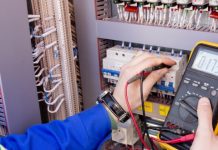When delving into the realm of powder coating, comprehending the fundamental anatomy of a powder coating machine is paramount. A beginner should familiarize themselves with the core parts: the hopper, where the powder is stored; the spray gun that finely mists the powder onto the target surface; and the control unit that orchestrates the operation.
In this intricate dance, the conveyor system plays a crucial role, shuttling items through the various stages of the coating process.
The industrial oven, often an industrial powder coating oven, is the finale where the alchemy happens—fusing the powder to the substrate, creating a durable and protective layer. Each component is integral, working in concert to produce a finish that is not only aesthetically pleasing but also resistant to the ravages of time and environment.
Understanding the Control Panel
Shifting our focus to the brain of the machine, the control panel is a symphony of buttons and displays, each with its purpose and potential. For beginners, the panel may seem daunting, but it is the epicenter where precision meets user command. Here you dictate the operational parameters: temperature settings, airflow, and electrostatic charge levels.
A deep dive into the manual can transform the intimidating array of dials and switches into familiar tools, empowering operators to tweak and tune the process with confidence. Mastery of this control nexus is not only about pushing buttons—it’s about ensuring the seamless execution of a flawless coating.
Powder Application Methods
The art of applying powder coating is as much about technique as it is about the substance. There are two primary methods: electrostatic spray deposition (ESD), a favorite for its efficiency, and the fluidized bed application. ESD harnesses the power of an electrostatic charge to adhere the powder to the metal, minimizing waste and maximizing coverage.
The fluidized bed method, although less common, offers a thicker coating by preheating the items before they are dipped into a fluidized powder. Each technique has its own set of virtues and is chosen based on the end goal of the coating process. It’s the strategic selection of these methods that often dictates the quality of the final product.
Powder Curing Techniques
Once the powder is applied, the journey is only half done. Curing is the next critical phase, and it is here that the industrial oven takes center stage. This is no mere baking—it’s a calibrated process where heat transforms the applied powder into a uniform, solid coat.
Curing techniques vary based on the powder type and the substrate, but the objective remains constant: to achieve the perfect fusion of powder to surface. Infrared ovens and convection ovens are the most prevalent in the industry, each with its specialties and strengths. An industrial convection oven ensures a consistent temperature that cures the powder evenly, whereas infrared may offer faster curing times for certain applications.
Safety Features and Precautions
Safety cannot be overstated in the powder coating industry. Machines today come equipped with a plethora of safety features to protect operators from the array of hazards present in the process.
Interlocks, emergency stops, and exhaust systems are but a few of the guardians that stand between the operator and potential danger. Understanding and respecting these precautions is not optional; it’s imperative.
A beginner must grasp that compliance with safety protocols is as integral to quality coating as any technical skill. Regular training sessions are crucial in keeping the knowledge fresh and the practice of safety omnipresent.
Maintenance and Cleaning Guidelines
Lastly, the longevity and efficiency of a powder coating machine rest on the shoulders of routine maintenance and cleaning. This isn’t merely about keeping appearances; it’s about safeguarding the investment and ensuring the machine runs at peak performance. Each part of the machine—from the smallest nozzle to the vast expanse of the industrial oven—requires attention and care.
Scheduled cleanings prevent build-up that can compromise quality, while regular maintenance can foresee and prevent mechanical failures. The mantra here is simple: a clean and well-maintained machine is the bedrock of excellent powder coating results.
Conclusion
Diving into the world of powder coating machines is a journey of learning and mastery. From understanding the essential components and their functions to grasping the nuances of the control panel, application methods, the science of grounding and electrostatics, the precision of curing techniques, the indispensability of safety, and the importance of regular maintenance—each element is a chapter in the story of creating durable and high-quality finishes. For the beginner, the path is steeped in both challenge and reward, paving the way to becoming an artisan in the craft of powder coating.






